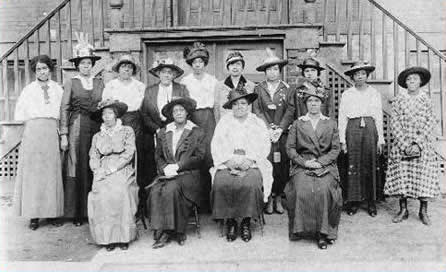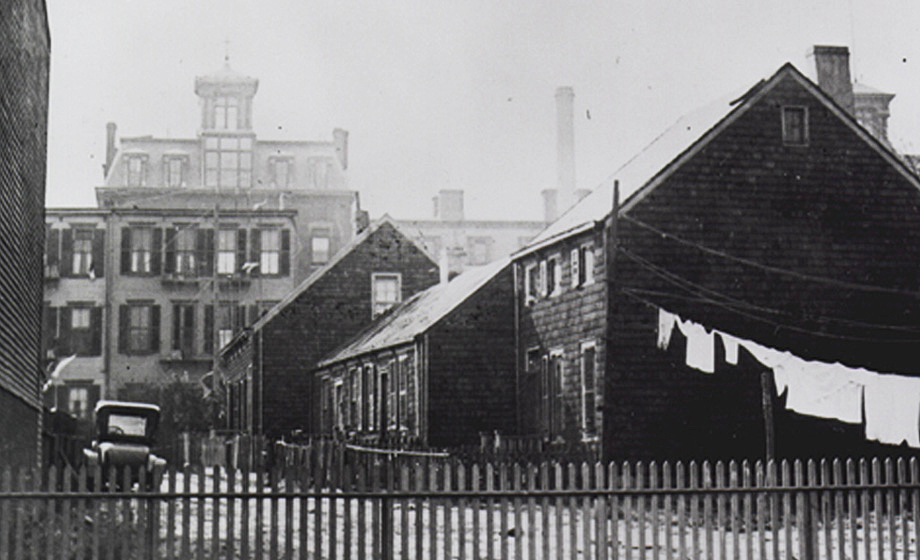Hello Everyone:
Welcome to a fresh week on the Blog and it will be a busy week. Today is the Iowa Caucus, the first time voters will have their say in what seems like an endless campaign to be the Democratic nominee for President of the United States. Also today, the House managers and defense lawyers representing presented their closing arguments in impeachment trial of Mr. Donald Trump . Tomorrow, we have the State of The Union address and a chance for senators to make their pitch for acquittal or conviction and on Wednesday we will have a verdict. As always The Blogger Candidate Forum will have some thoughts on all these events. For no, Blogger is here with the fight to preserve African American history.
 |
| Rosenwald School npr.org |
No one knows were enslaved people, like Gabriel, are buried. Gabriel was born the year the United States declared its freedom from Great Britain. Gabriel was trained as a plantation blacksmith and hired out to foundries in Richmond, Virginia, where he became acquainted with his fellow enslaved people (newyorker.com; Jan. 27, 2020; date accessed Feb. 3, 2020). Together, they were inspired by the revolutionary times and ideas of independence that were out of reach for them. While Gabriel continued to fill his masters' demand, he forged a network of thousands of enslaved and free African Americans to rally around around the Death or Liberty flag. What followed was a thunderstorm, delaying the planned revolt in August 1800 and betrayal by two of the co-conspirators. Shortly after, 26 of them were hanged and, prophetically (of sorts) enough, Gabriel was hanged less than a mile from the church were Patrick Henry spoke his immortal word that inspired rebellion. Some historians believe that Gabriel's body that his body was left in the burial ground beside the gallows, consigned to the Richmond bottoms, washing into Shockoe Creek whenever it rained.
 |
| Shockoe Bottom Richmond, Virginia savingplaces.org |
Shockoe Bottom was the epicenter of Richmond's slave district. "In the three decades before the Civil War, more than three hundred thousand men, women, and children were sold in Richmond, the second-largest slave market in the United States" (Ibid). Not every enslaved person was shipped further south, some stayed in Virginia, working in the tobacco warehouses, ironworks, and flour mills (Ibid). Between 1750 and 1816, the majority of African Americans who passed away in the city, were laid to rest in the Burial Grounds for Negros. After that, the Shockoe Bottom graves were abandoned and the land was taken over by residents ignoring the coffins and bones. What remained was later converted into a jail; then an animal shelter; later state and federal officials carved the I-95 Freeway through its center (Ibid).
Brent Leggs, the director of the African American Cultural Heritage Action Fund at the National Trust for Historic Preservation, spoke to The New Yorker lamenting,
I remember thinking there was nothing left... (Ibid)
 |
| Shockoe Bottom protests richmond.com |
Protests began in 2002, when the former slave district was still a parking lot. Community groups like the Defenders for Freedom, Justice & Equality joined together to reclaim burial ground to commemorate Richmond's slave trade history. The Defenders conducted walking tours, educational workshops, and site vigils. Activists demanded that Richmond get your asphalt off our ancestors (Ibid) but it took a decade. A proposed minor-league baseball stadium touched off a fresh wave of protests in 2013. The proposed stadium at Shockoe Bottom would have destroyed whatever remaining archaeological evidence there was and desecrated the burial ground. At this point, the NTHP stepped in.
In 2014, thanks in part to the Oscar-winning movie 12 Years A Slave (savingplaces.org; July 14, 2014; date accessed Feb. 3, 2020), Shockoe Bottoms was declared one of America's 11 Most Endangered Historic Places (Ibid: June 24, 2014), "a designation that the Trust assigns to about a dozen [11 actually] sites annually, fostering public pressure to halt development that would destroy them" (newyorker.com; Jan. 27, 2020). Richmond withdrew its plans for the stadium the following year; the Defenders proposed a memorial park that would link Gabriel's rebellion with the Civil War and the War of Independence. At the moment, Richmond says it cannot afford a large memorial park and Shockoe Bottom is limbo.
 |
| Brent Leggs Director of the African American Cultural Heritage Action Fund arch.umd.edu |
The example of Shockoe Bottom illustrates the larger, long past due national movement to preserve African American history. "Of the the more than ninety-five thousand entries on the National Register of Historic Places--the list of sites deemed worthy of preservation by the federal government--only two per cent focus on the experiences of black Americans" (Ibid). Preservationists like Mr. Leggs are working with activists, archaeologists, and historians are working to right the situation. They are actively working to preserve and promote the Bronx-birthplace of hip-hop; the Pauli Murray Family Home in Durham, North Carolina, and Fort Monroe in Hampton Roads, Virginia an army on the land where African captives were first brought to the American colonies in 1619.
Historic Preservation has a history of its own. The first preservation laws in the United States were enacted in 1872, designed to protect the land, beginning with President Ulysses S. Grant's declaring Yellowstone a national park. Civil War battlefields and burial grounds became an immediate priority for preservation. This led to the passage of the Antiquities Act of 1906, giving presidents the power to create national monuments, protecting the terrain and artifacts of indigenous culture found there. In 19196, the National Park Service was created, granting the federal government more power
...to conserve the scenery and the natural and historic objects and wild life therein (Ibid)
In the years that follow, the category of historic objects expanded and the NPS got involved in preserving places like Jamestown; eventually setting national policies for cultural heritage protection. In 1949, President Harry Truman sign legislation creating the National Trust and in 1966, President Lyndon Johnson signed into existence the National Trust for Historic Preservation.
| charities.org |
Since its establishment the NTHP has identified almost two million preservation-worthy locations and engage millions of Americans in the work, generated about two million jobs and hundred billion of dollars in private investment (Ibid). For all the great work it has done, the biases written into the criteria that are used to determine designation-worthiness cannot be over looked. Those biases preface white Americans. To give you an example, one criteria is architectural significance, therefore modest buildings like slave cabins and tenement houses were long excluded from consideration. These buildings were ignored and fell into neglect leading to neglect and eventual destruction. Replaced by highway construction, gentrification, and urban renewal projects (Ibid).
 |
| Members of the National Association of Colored Women crusadeforthevote.org |
While state and federal institutions were turning a blind eye to these places, communities of color began organizing their own preservation initiatives. Brent Leggs considers 1917 to be "the formal beginning of African-American historic preservation... when the National Association of Colored Women organized a campaign to pay off the mortgage on Cedar Hill, a Gothic Revival house in Washington D.C., that belong Frederick Douglass" (Ibid). Fifty years later, another group of African American women organized to salvage the remains of Weeksville, "an antebellum free-black community in Brooklyn that was started by longshoreman James Weeks, in the early nineteenth century" (Ibid). The group was led by artist Joan Maynard who equated the saving of black history with the protections of black lives. Ms. Maynard argued,
We've got to make sure our kids know how they got here, and what those who came before did to try and make a better life (Ibid)
Joan Maynard hoped that the Weeksville residents' commitment to urban farming, homeownership, and liberty would inspire future generations. Weeksville was added to the National Register of Historic Districts in 1972.
| Camp Nelson Kentucky nps.gov |
African American preservation campaigns continue to this day. In October 2018, Mr. Donald Trump designated Camp Nelson in Kentucky as a national monument. Camp Nelson was a Civil War site, best known for the Union army lifting its ban on African American soldiers and accepting ten thousand formerly enslaved men and their family members, though technically still enslaved, were given refugee status (Ibid). In 2019, the president designated the home of civil rights activist Medgar Evers, in Mississippi, a national monument. The designations were intended to redeem the White House after its inflammatory handling of the events in Charlottsville in the summer of 2017 that left activist Heather Heyer dead.
It was in the aftermath of Charlotte that Mr. Leggs and colleagues were inspired to create the African American American Cultural Heritage Action Fund, the largest ever dedicated to the preservation of sites of African American history. Since its creation, the Fund has received over eight hundred grant applications. Last the the National Trust for Historic Preservation awarded grants to 22 recipients, including the African Meeting House in Boston, Massachusetts, the oldest extant black church in the U.S. and Harriet Tubman's house in Auburn, New York (newyorker.com; Jan. 27, 2020).
The Action Fund has raised over twenty million dollars from private individuals and non-profits like the Ford Foundation, the J.P.B. Foundation, and the Andrew W. Mellon Foundation (Ibid). Elizabeth Alexander, a poet and the president of Mellon Foundation, told The New Yorker that "for long time communities of color have had to carry around knowledge and stories in our bodies, because resources were devoted to preserving the spaces that held those stories" (Ibid). Ms. Alexander describes the work Mr. Leggs and his colleagues are engaged in as rescue work (Ibid).
 |
| Weeksville, Brooklyn, New York 6sqft.com |
Typically, the communities that benefit the most from preservation are the ones that need it the least. Critics, like Binyamin Applebaum of The New York Times (nytimes.com; Jan. 26, 2020; date accessed Feb. 3, 2020) have called out the elitist nature of preservation and a mechanism for wealthy property owners to defend against development, which can include affordable or high-density housing. In less affluent communities, designations are rare and encroaching gentrification eat away at the history. For example at Weeksville, it took decades of penny drives and bake sales to secure the kind of designations awarded to sites of Confederate heritage in much less time (newyorker.com; Jan. 27, 2020). One of the Action Fund's tasks working with the communities to identify adaptive reuses for historic spaces that can give a older building a new lease on life instead of turning it into another museum.
These are just some examples of why it is so important to expand the idea what we consider preservation-worthy. History is often viewed through a narrow field but the existence and preservation of sites like Weeksville and Villa Lewaro help us expand this view. We live in a period where there is an urgent need for a more inclusive understanding of American history. Historic preservation helps us to understand just how expansive it is by dedicating its efforts to working with communities to not only save sites of historic and cultural significance but also insuring they are available to future generations.
No comments:
Post a Comment